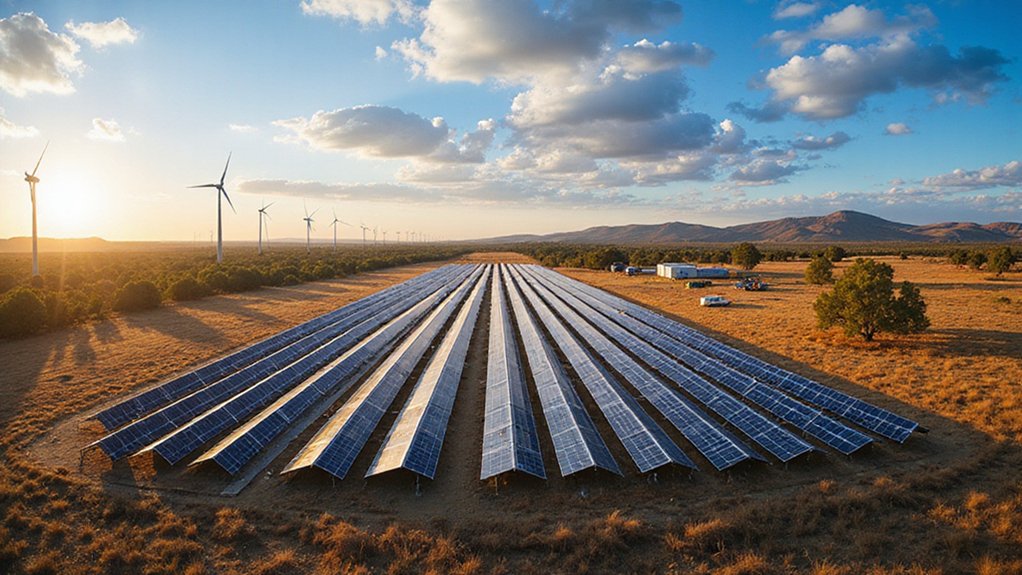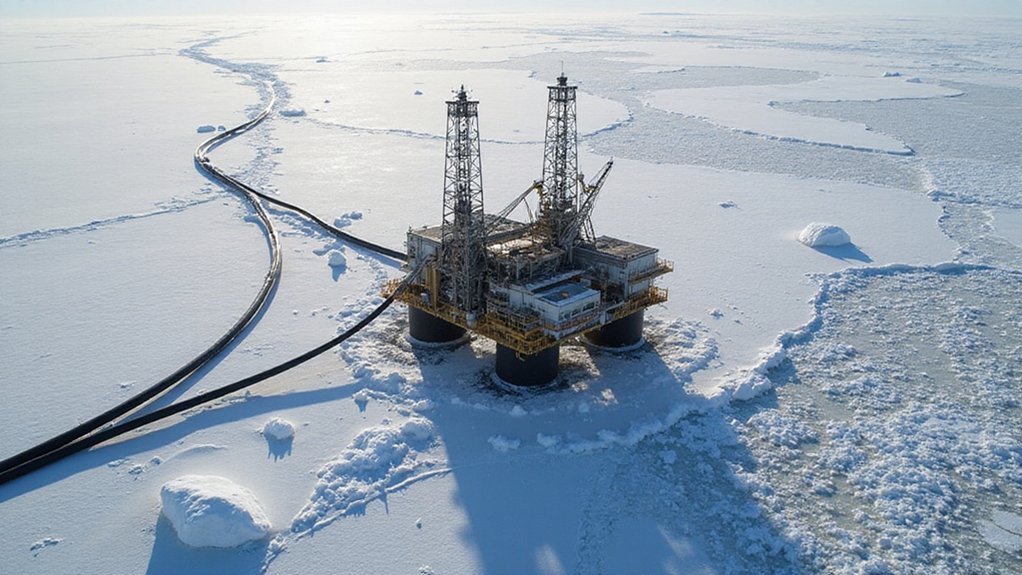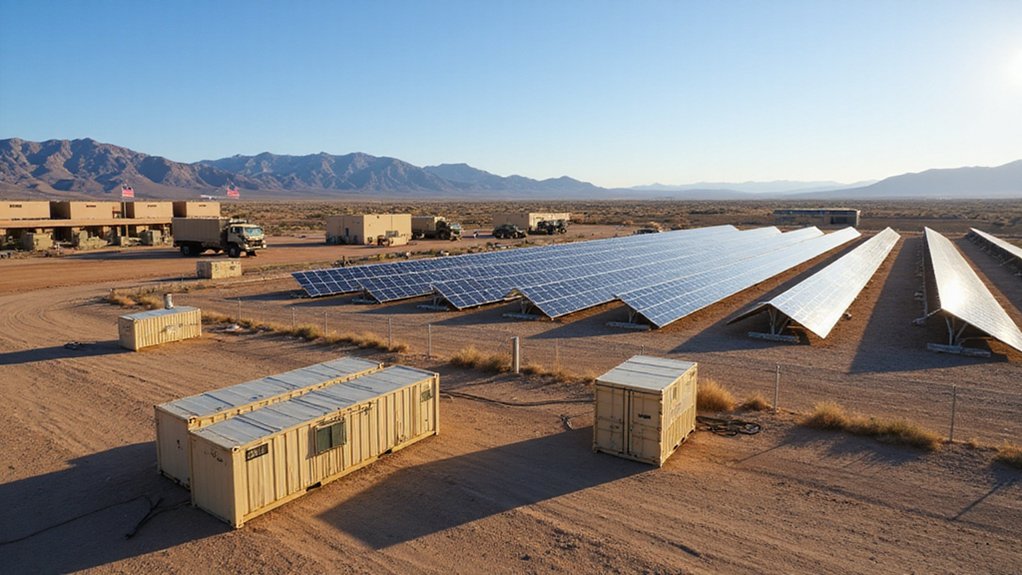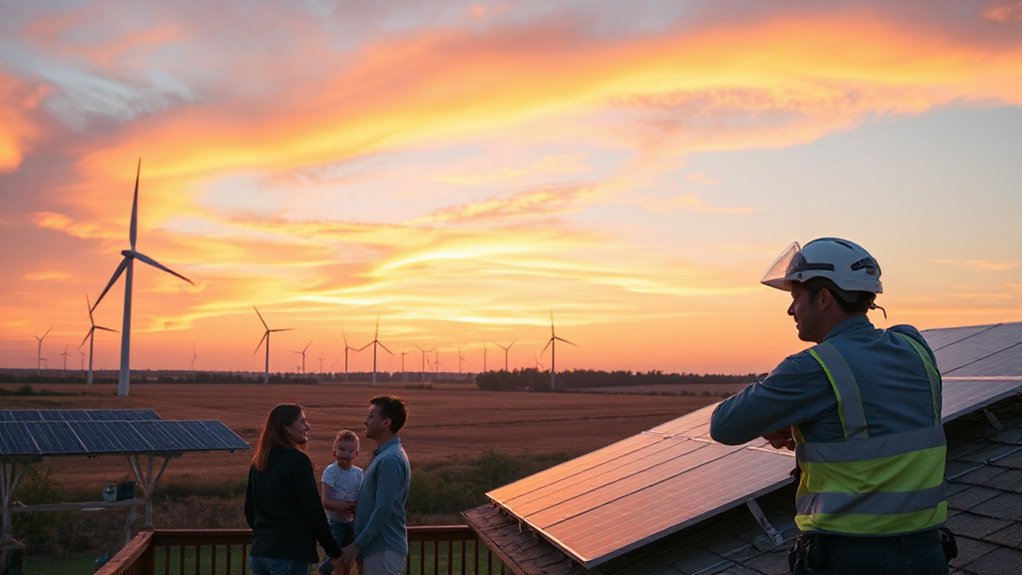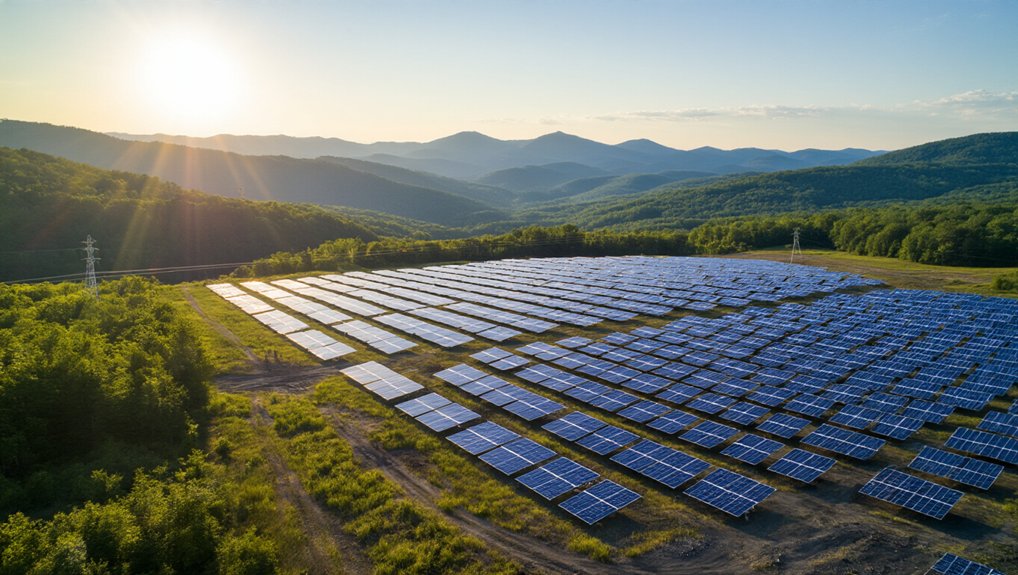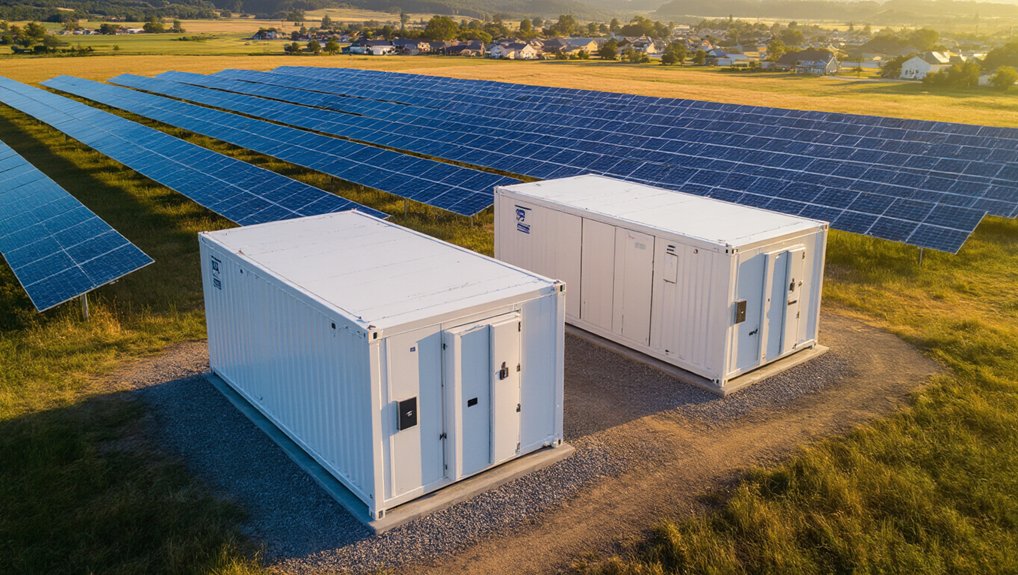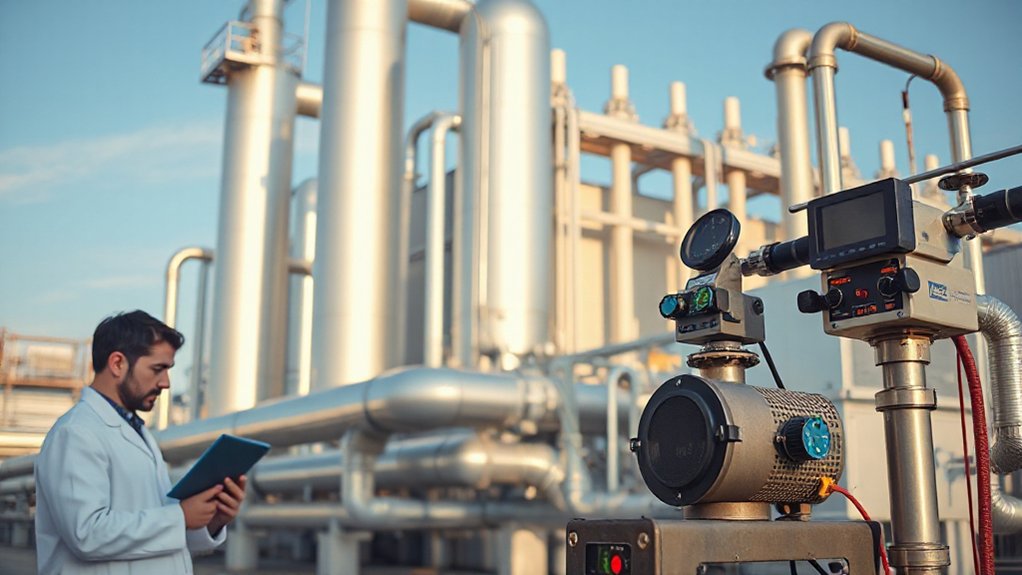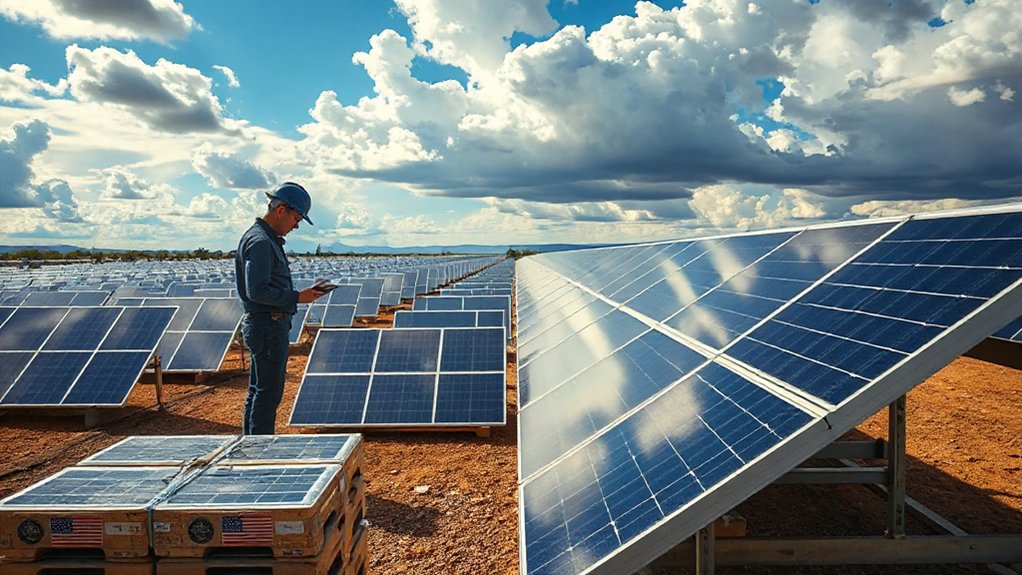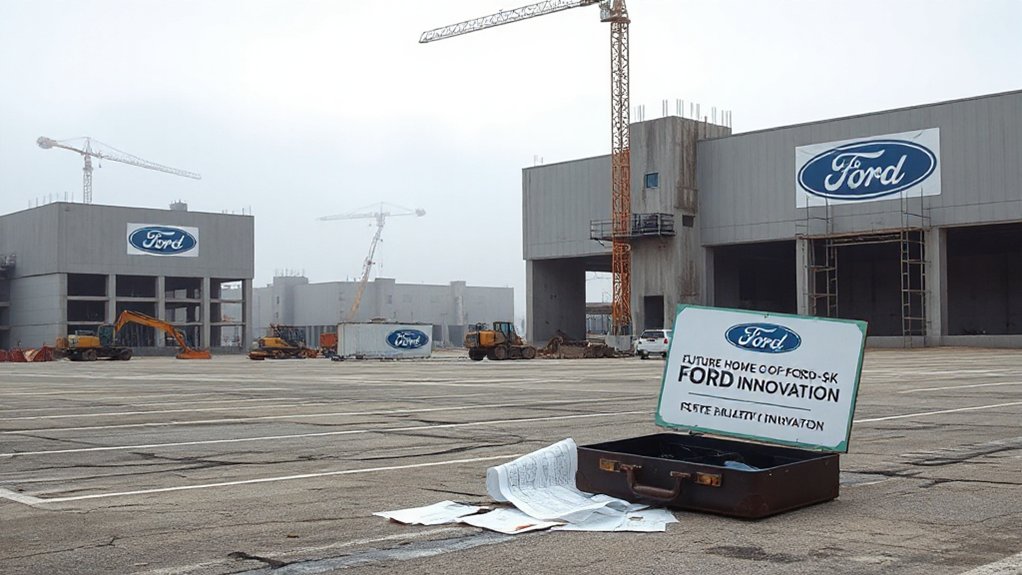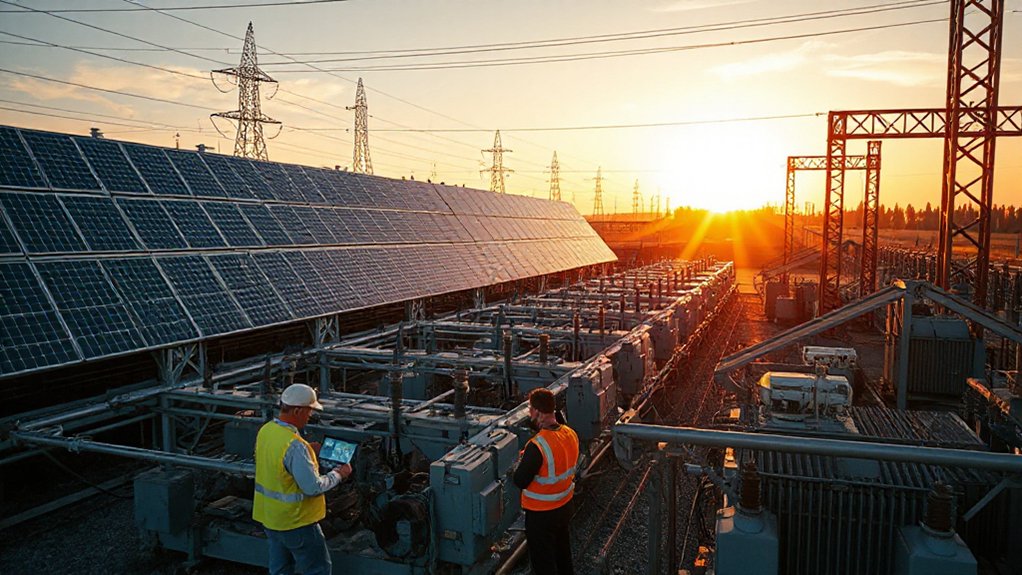New South Wales just approved 3.65 gigawatts of clean energy projects—talk about going green! The massive initiative includes solar farms, wind, and battery storage to replace aging coal plants. The Goulburn River solar farm leads the pack at 800 MW with a 300 MW battery. Private investment will hit AU$17 billion, creating jobs and powering about 250,000 homes. Five renewable energy zones are set to transform Australia’s energy landscape by 2030. The transformation is just warming up.
While Australia’s coal plants face an uncertain future, the New South Wales government has decisively approved 3.65 gigawatts of clean energy projects for grid connection. The ambitious rollout includes solar PV, wind, and battery storage systems. Coal’s on its way out. Renewables are in.
The massive Goulburn River solar farm, packing 800 MW of capacity alongside a 300 MW battery system, stands as the crown jewel. This single project will generate 1.3 TWh annually—enough juice for 250,000 homes while slashing 910,000 tonnes of CO2. Developed by Lightsource bp, this London-based clean energy company is making significant strides in Australia’s renewable sector. Not too shabby for some silicon panels and sunshine.
NSW is going all-in with five multi-gigawatt Renewable Energy Zones strategically positioned across the state: Hunter-Central Coast, South-West, New England, Central-West Orana, and Illawarra. The government’s not messing around. They’ve tapped AEMO Services and Energy Corporation of NSW to run a competitive tender, attracting serious players to the table. Construction on the Central-West Orana REZ is scheduled to begin mid-2025.
The economic upside? About AU$17 billion (US$10.85 billion) in private investment. Cash flowing into local communities through connection access fees. Jobs. Growth. The whole economic enchilada. Private sector companies are practically tripping over themselves to join the renewable gold rush. This growth aligns with the global trend where the renewable energy sector is creating jobs at twice the rate of the overall job market.
These projects aren’t just random solar farms scattered about. They’re part of a coordinated strategy to replace dying coal plants with modern, distributed generation. The REZs will integrate long-duration storage technologies and maximize grid efficiency. It’s like watching the energy system evolve before our eyes.
Timeline-wise, expect the first wave between 2027 and 2030. Lumea’s already connected 12 GW across 55 generators in just five years. Impressive track record.
NSW’s renewable capacity now sits at roughly 53% of total generation—about 13,500 MW. With coal’s days numbered, these new clean energy projects couldn’t come at a better time. The state’s betting big on sunshine, wind, and batteries. And honestly? It’s probably the right call.
References
- https://www.pv-tech.org/3-5gw-of-renewables-and-energy-storage-awarded-right-to-connect-to-new-south-wales-rez/
- https://www.pv-magazine-australia.com/2024/12/23/goulburn-river-solar-farm-nem-connection-works-announced-by-transgrid-arm-lumea/
- https://www.energy.nsw.gov.au/nsw-plans-and-progress/major-state-projects/electricity-infrastructure-roadmap
- https://asian-power.com/project/news/nsw-seeks-partner-new-england-renewable-energy-zone
- https://www.energy.nsw.gov.au/nsw-plans-and-progress/major-state-projects/shift-renewables
